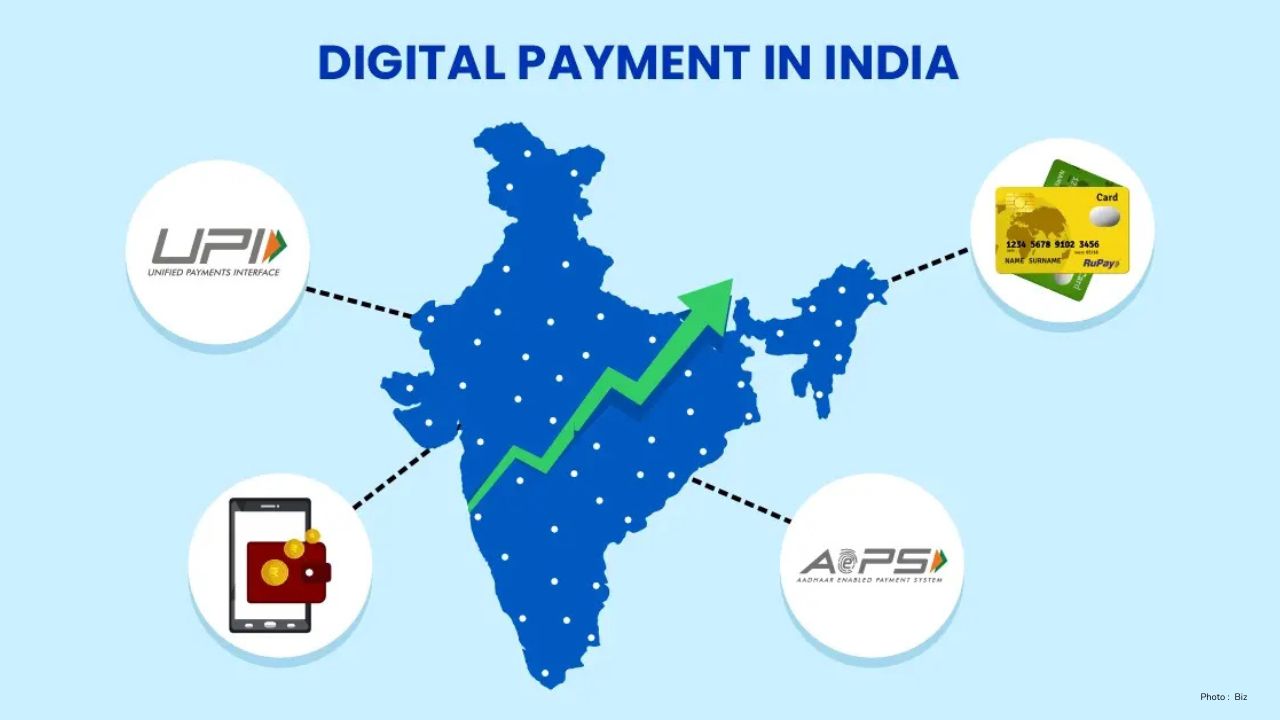
England Urged to Rethink Strategy to Revive Ashes
After a poor start to the Ashes, England must change their game plan quickly, says former Australia

In 2025, India is witnessing a major change in how people pay for goods and services. Cash is slowly becoming less common as more people switch to digital payments. Whether it’s buying groceries, paying school fees, or sending money to family, most transactions now happen through smartphones. This digital shift has made life faster, easier, and more secure for millions across the country.
The Growth of Digital Payments
Digital payments in India have grown rapidly in the last few years. The government’s “Digital India” program, along with the rise of UPI (Unified Payments Interface), has helped connect small towns and villages to online banking. Today, even street vendors and local shopkeepers accept online payments using QR codes.
According to the Reserve Bank of India (RBI), the number of digital transactions in 2025 has increased many times compared to 2020. This change has also helped people manage their money better and reduced the need to carry cash.
Role of UPI and Banking Apps
The biggest reason behind India’s digital payment success is UPI. It allows instant money transfers between banks using only a mobile number or QR code. Apps like Google Pay, PhonePe, Paytm, and BHIM have made this process simple for everyone — from city professionals to rural farmers.
In 2025, UPI crossed record levels of use each month. Many new features were added, like international UPI payments, voice-based transactions, and offline payment options. These updates made it possible to send money even without an internet connection, which is a great help in remote areas.
Government Efforts to Promote Cashless Economy
The Indian government continues to support a cashless economy. Programs like Digital Saksharta Abhiyan train citizens to use online payment safely. The RBI also introduced new rules to protect users from fraud and scams.
Tax benefits and cashback schemes have encouraged both customers and businesses to use online payment systems. Small businesses can now track income easily, pay taxes online, and receive government benefits directly in their bank accounts.
Digital Payments in Rural India
Earlier, digital payments were more popular in big cities. But now, rural India is catching up fast. Thanks to better internet connections and affordable smartphones, farmers and villagers are also using apps for everyday transactions.
The government’s push for “Jan Dhan accounts” has helped people in remote areas join the banking system. Farmers now receive subsidies directly in their bank accounts, which reduces corruption and delay.
Security and Trust
Security is one of the most important parts of digital payments. In the beginning, many people were scared of online fraud. But now, with strong protection systems like two-step verification and biometric login, people feel safer.
Banks and app companies regularly educate users about how to avoid scams. They send alerts about suspicious activities and help customers recover lost money in case of fraud.
Benefits for Businesses
Digital payments have also helped small and medium businesses grow faster. They no longer need to depend on cash, and they can sell products online easily. Many local shops have started digital billing systems, making their work more organized.
Business owners say that online payments help them save time and maintain a clear record of their sales. This is especially useful for getting bank loans or applying for government support schemes.
Future of Digital Payments in India
Experts believe that by 2030, India could become one of the world’s largest digital payment markets. New technologies like Artificial Intelligence, blockchain, and biometric payment systems are expected to make transactions even faster and safer.
The government is also working on making UPI available in other countries. This means Indian travelers and businesses can send and receive money easily while abroad.
Fintech companies are developing new ways to make payments through wearable devices like smartwatches. Soon, people might pay by just tapping their wrist or scanning their face.
Challenges That Still Exist
Even with all the progress, some challenges remain. Not everyone in India has access to fast internet or smartphones. Older people sometimes find it difficult to understand new apps. Cybercrime and fake links also continue to be a threat.
To solve these issues, more awareness programs are needed. Local training centers can help people learn to use digital payment tools safely.
Disclaimer
This report is based on publicly available data and expert analysis as of 2025. All details are meant for informational purposes only. Readers are advised to follow official government and bank guidelines before using digital payment platforms.